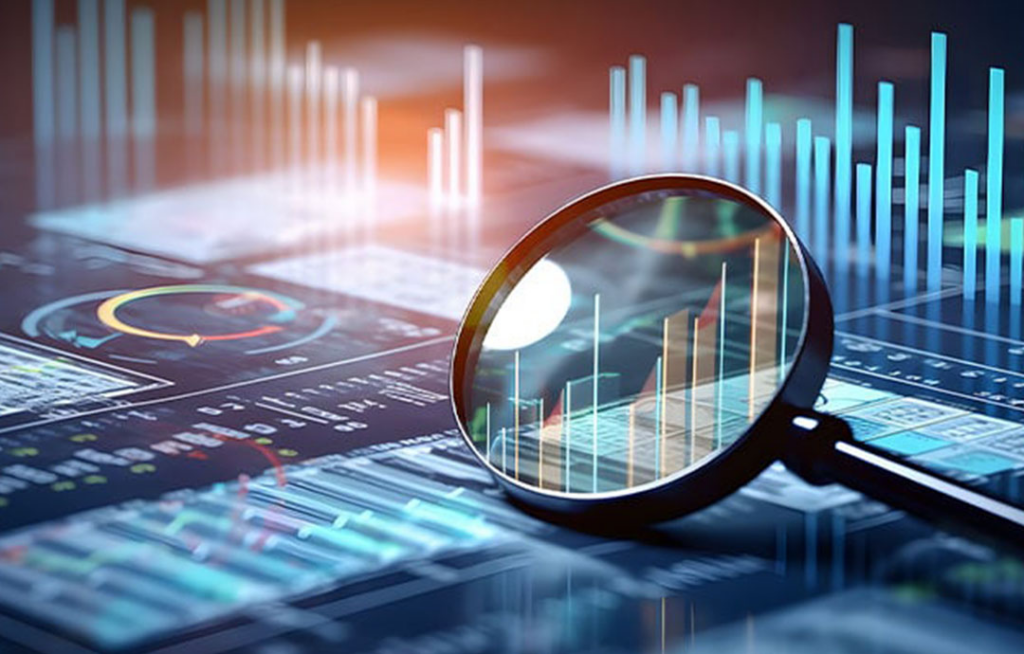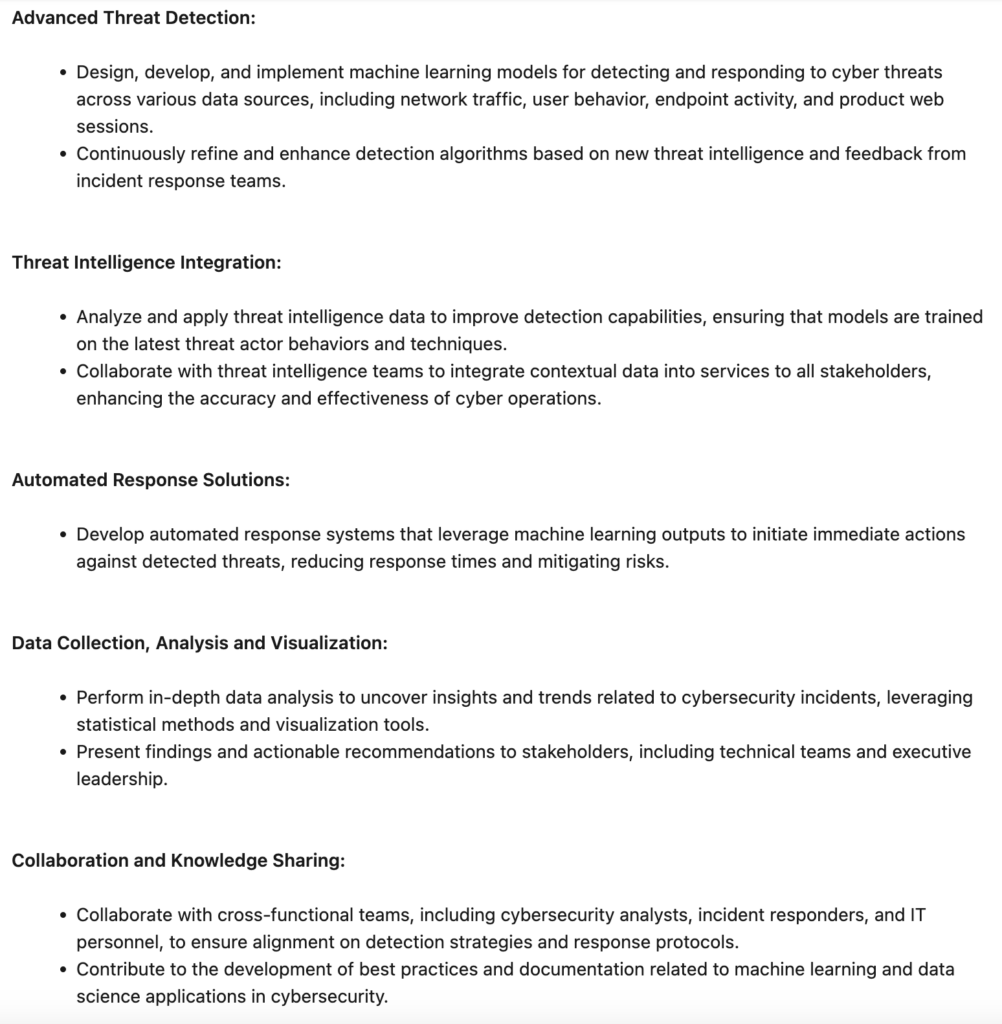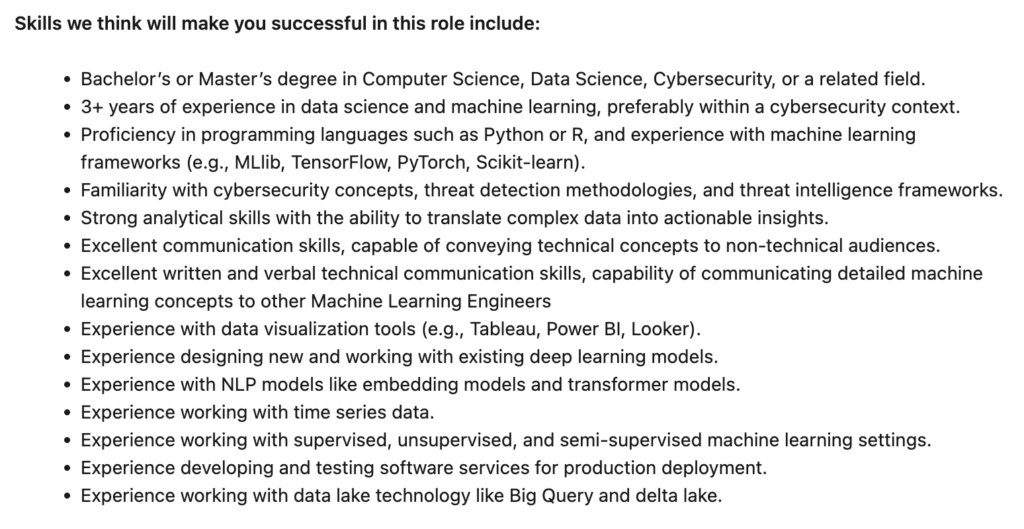Data Analytics is becoming one of the hottest fields in data science and has gained significant attention in recent years. Along with the explosion of big data, data analysis has become a necessary tool for organizations that aim to develop strategic orientations and gain an overview of their business to devise future development strategies, bringing maximum efficiency to their operations.

Security Analytics is no exception. Security analytics is the combination of tools used to identify, protect, and troubleshoot security events that threaten your IT system using real-time and historical data. It is based on utilizing collected data from systems, collating and analyzing it, and then converting it into actionable recommendations, decisions, and reports.
With expertise in data analysis, coupled with the increasing demand for security analytics, the role of a Security Data Analyst has emerged. Their task is to analyze security data quickly and effectively, while maximizing the value of data through advanced data analysis techniques to ensure optimal protection for both data and systems.
With an increasingly important role in the age of big data, Data Analysts not only focus on analyzing business data but also create groundbreaking value in the field of security. To delve deeper into this topic, let’s explore what a Data Analyst does, their outstanding skills, and how they contribute to enhancing system security and protecting data from increasingly sophisticated threats.
What is Data Analyst?
Data Analyst is specialist in collecting, processing, analyzing data to transform raw information into valuable insights. They interpret the data to report on specific issues and proposes optimal solutions for effective decision-marking.

The main tasks of data analyst include:
- Identify the data to be analyzed: focus on relevant data that aligns with the objectives of the task or project.
- Data Collection: Gather data from various sources such as databases, software system, or files.
- Data Cleaning and Preparation: involves filtering data, handling missing values, and prepare data for analysis to ensure accuracy and relavance.
- Data exploration and analysis: use statistical tools and techniques to explore and analyze data,
identifying patterns, relations, and trends. - Data visualization: create visual representations of data findings through charts, graphs and dashboard to make data clear and understandable.
- Decision marking: Base on analyze results, provide recommendations to help organizations improve performance, solve problems, or seize opportunities.
Advantages of data analyst include:
- Fast analysis Speed: Use modern tools to process big data in a short time, helping detect
issues and respond promptly. - Accurate results: Data is cleaned and analyzed scientifically, ensuring reliable and trustworthy information is provided.
- Data visualization: create dashboards, charts to effectively communicate information
across all levels of the organization. - Decision-Marking: provides recommendations base on analyze results, help optimize
strategies and reduce risks. - Flexible across multiple fields: Applicable in various fields such as business, security, finance, healthcare, … with deep and precise analysis.
From the strengths mentioned above, we can clearly see the role and importance of Data Analysis in processing and analyzing data to produce results quickly and effectively. This is necessary in many fields, and security analytics no exception. Let ‘s find out what a Security Analyst is, their are needs to protect data and system, and whether a Data Analyst can meet these special requirements.
What is Security Analyst?
Security Analyst is specialist in network security, who protects the data, systems, and networks of organizations from threats such as cyber attacks, unauthorized access and data leaks. They monitor system, analyze anomaly signatures and apply protective methods or repairs to ensure safety and security of all technological architectures.

The main tasks of security analyst include:
- System monitoring: use SIEM tools to collect and analyze logs, monitor the activity of systems, networks and applications to detect abnormal activity.
- Detect and response with threats: Identify security vulnerabilities and potential risks before they can be exploited. Provide rapid response to prevent or minimize damages from network attacks.
- Forensics and analyze incidents: Analyzing root causes of security incidents and develop solutions to prevent recurrence. Create detail incident reports and provide recommendation to improve the security system.
- Update and protect actions: Ensure that systems are always up to date with the latest security patches. Deploy protective solutions such as firewalls, access control, data encryption.
- Raising security awareness: Conduct security training for employees to aware threats such as phishing email, malware. Established clear security policies and promote a strong security culture within the organization.
From the tasks mentioned above, security demands rapid tracing capabilities to detect and respond to threats, as well as to conduct forensics and incident analysis. To meet these requirements, data analytics emerges as a top choice, capable of addressing the challenges that security poses. With its fast analysis speed, accurate results, and data-driven decision-making capabilities, data analytics is a key field that can integrate with the role of a security analyst to enhance efficiency and effectiveness in safeguarding systems and data.
This combination created the Security Data Analyst, a specialized role that combined the strengths of data analytics and security expertise to effectively protect systems and data, detect and respond to attacks quickly and effectively.

Security Data Analyst – The perfect combination
Security Data Analyst is professional who combines the data analytics and cybersecurity, responsible for analyzing security data to detect, predict and reduce security risks. They use analysis tools or techniques to process for a large amounts of information from security system to identify anomalies, vulnerabilities, or trend that could lead to risk to the organization. Data analyst uses their knowledge to help organizations enhance their security efforts. As the threat of cyberattack increases, so does the need for cybersecurity professionals who can prevent them.
Duties and Tasks of Security Data Analyst
- Collect and analyze security data: work with logs storage system, traffic networks and security events. Use analyze tools such as SIEM, SQL, python to analyze security data.
- Detect threats: Utilize statistical and machine learning techniques to detect abnormal behaviors or network attack signatures.
- Decision making: Present detected threats using dashboards, provide actionable information to the security team to enable timely decision-making and responses.
- Build detect model: Design analyze security models to predict and prevent hidden threats.
- Support forensic incidents: Analyze the root causes of security incidents through data and propose effective remedial measures.
Necessary skills:
- Analyze data skill: Proficient use of tools such as SQL, SIEM, python, R,.. and visualization tools such as Superset, Tableau, Power BI,…
- Security Knowledge: Strong understanding of attacks, security vulnerabilities, and defensive strategies to protect systems.
- Data analytics thinking: Ability to identify trends, data patterns, and anomalies from large data sets.
- Programming skill: Proficient in programing to enhance process efficiency and automate repetitive tasks.
- Knowledge of technology: Family with tools such as SIEM (Splunk, ELK, …) or automation tools like n8n, …
Job market needs
Recently, some companies have started recruiting for security data analyst engineer or specialist positions, such as PayPal and MetLife. Now, we will refer to the job descriptions to understand the specific requirements for these roles.
PayPal, the payment company, opened jobs about Cybersecurity Analytics Engineer with background Machine Learning (https://www.linkedin.com/jobs/view/4039791994)


From above Summary, we can see that PayPay requires a candidate with expertise in CyberSecurity Analytics, aiming to develop advanced capabilities to support Threat Detection Engineering, Offensive Security teams. The candidate will leverage data analytics and machine learning to create innovative solutions that enable faster detection and automated response to emerging threats. This role will help protect their organization against the threat from outside attackers.
We go detail this job to get needs and requirements of PayPal for this role.

Job Description describe this role will work with Cybersecurity Operations with team to translate data to actionable outcomes through data science and engineer approaches.

The above tasks in Cybersecurity focus on areas such as Threat Detection, Threat Intelligence, and utilizing knowledge and data analysis techniques to achieve the goals. For instance, in Threat Detection, the tasks involve designing, developing, and implementing machine learning models to enhance detection and response capabilities. In Threat Intelligence, the focus is on analyzing and applying intelligence data to improve detection accuracy. Regarding incidents, data analysts are responsible for collecting, analyzing, and visualizing data to help identify attacks and provide recommendations for the security teams.

The ideal candidate should experience in data science and machine learning, particularly in cybersecurity. Proficiency in Python or R, machine learning frameworks (e.g., TensorFlow, PyTorch), and familiarity with cybersecurity concepts and threat detection methodologies are essential. The role demands expertise in data visualization tools, deep learning models, NLP techniques (e.g., transformers), and time-series data analysis. Strong analytical and communication skills are required, along with experience in supervised, unsupervised, and semi-supervised learning, production-ready software development, and working with data lake technologies like BigQuery and Delta Lake.
Conclusion
In an era where data takes center stage, the role of Data Analysts in security is indispensable. Their ability to process, analyze, and interpret large volumes off security data helps organizations stay one step ahead off potential threats. By turning raw data into valuable insights, Data Analysts help security teams detect vulnerabilities, respond to incidents and build proactive defenses.
The combination of data analytics and security operations creates a powerful foundation for addressing the increasingly complex challenges presented by modern cyber attacks. With expertise in data visualization, rapid analysis, and data driven decision making, Data Analysts not only improve the effectiveness of security processes but also contribute to the protraction of the digital space for businesses and individuals.
As cyber threats continue to evolve, the importance of Data Analysts in connecting data and security becomes increasingly clear, Their work ensures that organizations can predict risk, mitigate damage, and protect critical assets, cementing their place as an indispensable cornerstone of modern security strategies. The future of security is data-driven, and Data Analysts are at the heart of transformation.
Reference
[1] Understanding What is Data Analyst – https://www.simplilearn.com/data-analyst-job-description-article
[2] Cybersecurity Data Analyst: What They Do + How to Become One – https://www.coursera.org/articles/cybersecurity-data-analyst
[3] MTS 1, Cybersecurity Analytics Engineer – https://www.linkedin.com/jobs/view/4039791994
[4] A Guide to Becoming a Cyber Security Analyst – https://medium.com/hackernoon/a-guide-to-becoming-a-cyber-security-analyst-5b311be52f29
[5] Data Security Analyst – https://www.roberthalf.com/us/en/job-details/data-security-analyst
[6] What is Security Analytics? – https://aws.amazon.com/what-is/security-analytics/